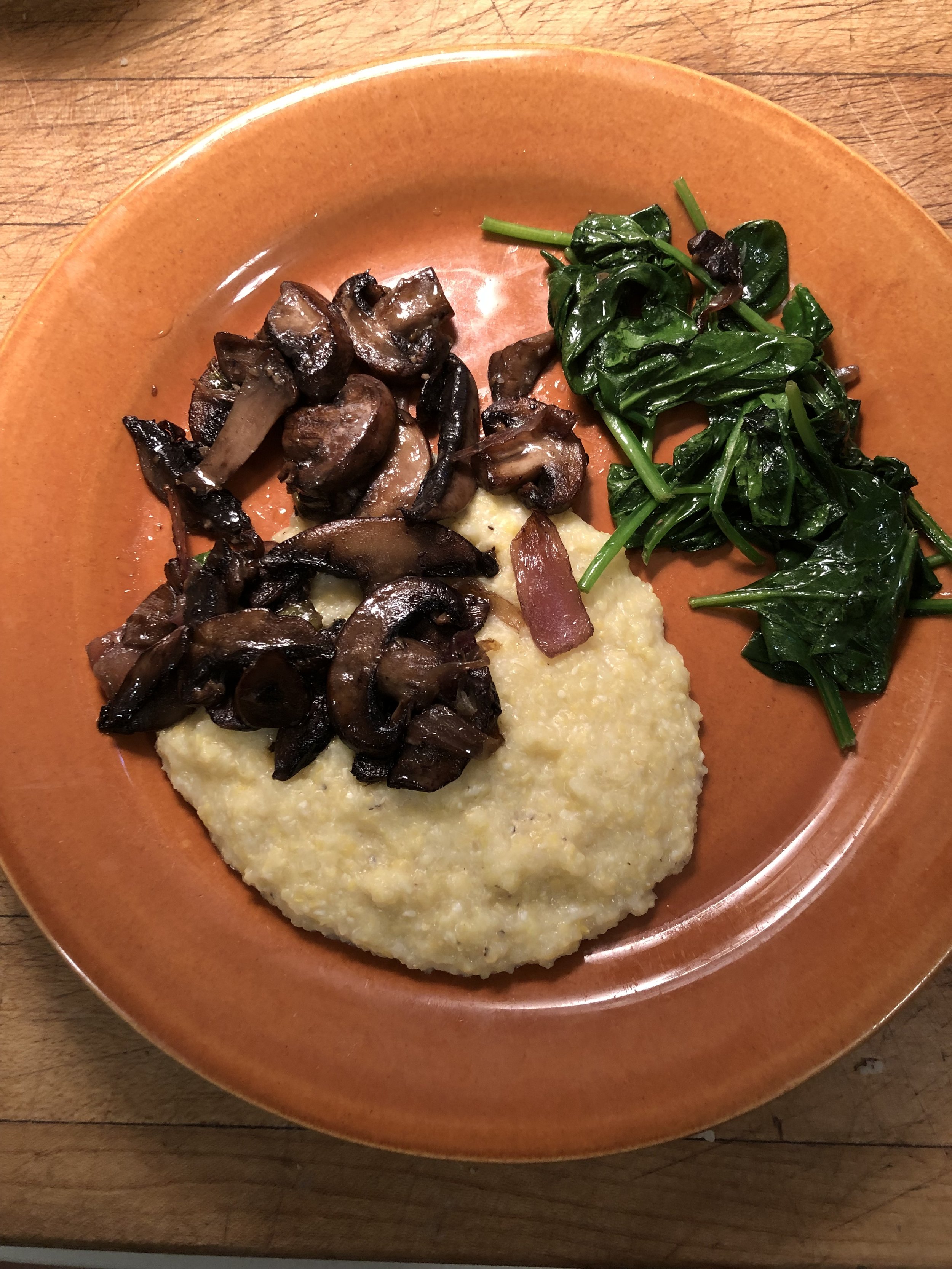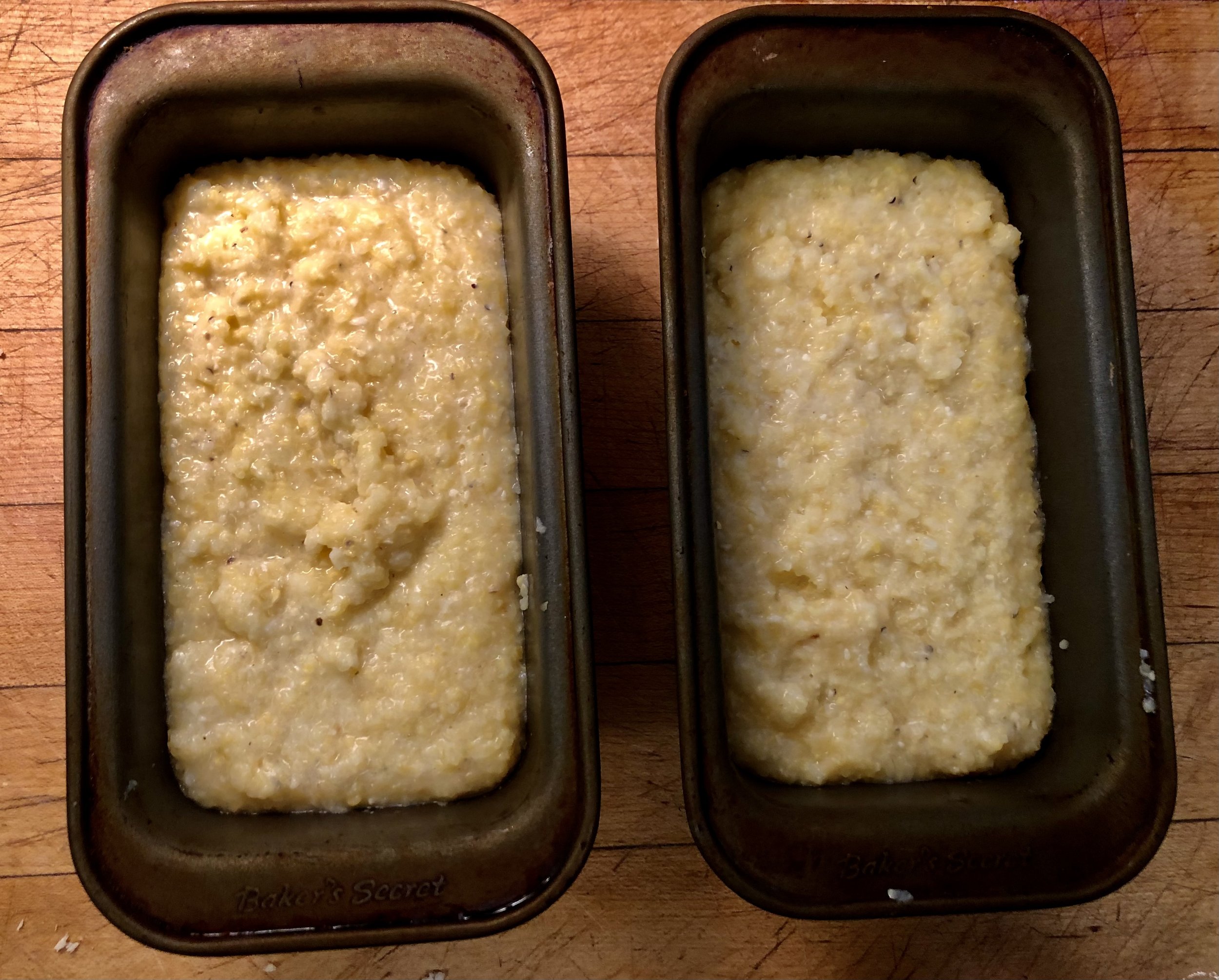Polenta and Grits
In today’s world as in the past, it is often simple comfort food that is the recipe for survival. And so as I prepare to face the uncertain year ahead, I find myself looking back at how polenta–a yellow corn Italian cousin of grits—came into my life. Being neither Italian nor a southerner, this humble grain never made it to my childhood breakfast table. We were an oatmeal and Cream of Wheat family. That changed with my first trip to Italy and my immersion into its food history.
Corn first arrived in northeastern Italy in the 16th century where it quickly became an important staple—especially in poor areas prone to famine where it was sometimes the only food eaten by mountain peasants. Today it accompanies all traditional dishes in the Alpine region of Friuli near the border of the former Yugoslavia. My introduction to polenta dates back to October 2000 when Kit and I traveled to Italy with a group led by an Italian-born chef we’d met in Chicago. Each day of that amazing trip we ate a meal cooked by a local chef from a menu our friend had provided. And every morning polenta was part of the breakfast buffet. Served creamy, fried or baked, it often accompanied meals topped with shrimp, chicken, pork, and vegetables.
After returning to Missouri that fall, I bought a copper “paiolo”—a classic polenta pot with top-heavy proportions that looks like it belongs in Manhattan’s Museum of Modern Art. Why, you might be wondering, was a specialized 7 1/2-inch-tall pot with a 5 ½ inch base and 10-inch-wide top needed for polenta which, after all, is just cornmeal, water and salt? If you’ve ever made polenta or grits, you may have experienced some challenges. Cornmeal gets lumpy, so it must be stirred constantly for about 20 minutes with a long wooden spoon to avoid sticking to the bottom of the pan. And when it thickens, it begins to bubble and spew like one of Yellowstone National Park’s volcanic hot mud pots.
In 2018, grits played an important role in Delia Owens’ national best-selling novel Where the Crawdads Sing. After speaking to a book club about Owen’s novel, Frankye Mehrle, a member of the book club, brought everyone a package of Braggadocio white corn grits—organically grown on the fifth generation McKaskle family farm in the upper South Missouri bootheel town of Braggadocio where she grew up. https://www.facebook.com/McKaskleFamFarm/
Eager to put my copper paiolo to use, I contacted Frankye Mehrle who shared her family’s recipe for cheesy grits. “They are best with garlic cheddar cheese,” she told me, and recommended Yancey’s Fancy New York artisan roasted garlic aged cheddar cheese. (Happily it is available in Nevada City, CA in my local market’s deli section.)
Frankye Mehrle’s Cheesy Grits
1 cup White Corn Grits (She recommends the Braggadocio organic brand)
4-1/4 cups water
½ cup butter
¾ cup garlic Cheddar cheese, grated
3 eggs
¾ cup milk
1 teaspoon salt
¼ teaspoon red pepper
Mrs. Mehrle suggests cooking grits in salted water. As the grits begin to thicken, add butter and cheese. Beat eggs and milk. Add to grits mixture. Pour into baking dish. Bake at 350 degrees for 25 minutes. For breakfast, her family served them with crispy bacon and a fried egg on top.
For a no-bake version of creamy cheesy grits, I simply add a teaspoon of salt to 4 cups of boiling water, then add 1 cup of corn grits and stir about 20 minutes until it thickens. Remove the pot from the heat and add 1 cup of Yancy’s cheese. Serve directly for breakfast with sautéed mushrooms and spinach or as a side with sautéed shrimp, pan-roasted cherry tomatoes, garlic and corn for lunch or dinner.
My friend Suzanne Dunaway who grew up in Texas LOVES polenta. “Mama used to give us grits in the winter with cinnamon and sugar and also made cheddar cheese grits. Suzanne now lives and cooks in SW France and Italy. “I love polenta,” she wrote recently, “with saucisse (little French sausages) parmesan and butter. If you have extra, put it in a small bread pan and it will set up (if you make it fairly thick). Butter a baking dish, cut slices of polenta, overlay them down the dish, add tomato sauce and parmesan and bake in 400-degree oven until browned. In Italy, this is called gnocchi alla romana.” She also loves fried polenta with a sprinkle of sweet paprika sautéed in hot olive oil.
Once a popular morning meal throughout the South and below the Mason-Dixon Line, grits (and polenta) now appear on breakfast, lunch and dinner menus across the country from Maine to Oregon. Humble comfort food that connects us to history, family, and home. Exactly what the world needs these challenging days.





